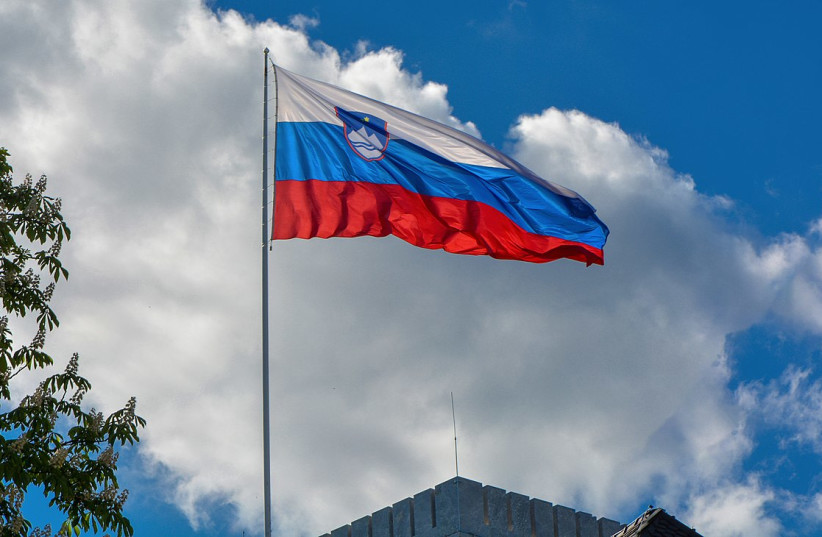
As one of the oldest cities in the world, steeped in thousands of years of history and religious significance, Jerusalem is a city of icons. Israel’s capital is dotted with numerous landmarks and monuments, each one with its own unique and fascinating history that adds to the ever-evolving tapestry of culture that is Jerusalem.
And then there’s the horse statue.
One of the city’s most unique landmarks, the horse statue in central Jerusalem – complete with what some would describe as a rather interestingly shaped head – certainly stands out.
In Jerusalem takes a long look at this very peculiar statue.
What is the horse statue, and where did it come from?
The horse statue, officially named the Horse of Peace, is a bronze statue of a horse, created made and donated by Slovenian sculptor Oskar Kogoj. It was brought to the city in 1997 by the Slovenian government and the Jerusalem Foundation in honor of the 3,000th anniversary of Jerusalem.

It was erected in the Frances L. Hiatt Garden on King George Street, originally known as Gan Hamenorah in honor of the Knesset menorah which sat across from the original location of the Knesset building, the great organ of Israeli democracy. The park is now also known as Gan Sussa, or “Horse Park.” Nowadays, the park is home to a lawn that slopes down to a stone-paved amphitheater with a shade pergola and a natural stone waterfall. It’s an ideal place for pedestrians, protesters, and exhibitions.
And this horse statue.
Why does the statue have such a distinctive shape?
Let’s not beat around the bush here. The horse’s head looks an awful lot like male genitalia. This is something many observers have noted, with “Penis Horse” being a nickname often tossed around by English-speaking Jerusalemites.
But there is a legitimate reason why the statue looks the way it does.
The horse’s head, and in fact its entire appearance, is meant to be reminiscent of the Venetic horses. These were famous depictions of horses that date back to the Late Bronze Age and Early Iron Age among the Veneti, a culture that lived in what is now parts of Italy and Slovenia. These horses can be seen on several pieces of Venetic art, including the famous Vace situla, one of Slovenia’s most important archaeological artifacts.
In using the design as his model, Kogoj explained on his website that “The result was a statue with a mild expression, a statue of a horse radiating some sort of divine peace.”
He further elaborated that he designed the Horse of Peace statue “in order to revive the ancient culture of the Slovenes – the culture of the Veneti. The statue is a portrait of human spirituality.”
This spiritual theme is something Kogoj further elaborated on in a statement sent to In Jerusalem, as well as drawing a direct connection to Jesus Christ.
"The horse has great symbolism in early civilizations, as an animal for work, an animal for war, and a representative of God's creation," he explained, describing the reason for the horse statue to be erected in Jerusalem. "The Venetic horse is the horse of peace, the horse that brings the Son of God, and it was my wish to have it placed as a symbol that unites all nations... It is a symbol of humanity, of love for all living things. This is what Jesus taught."
Kogoj made several other statues like this one, which can be found at the World Trade Centre in the Slovenian capital, in front of the Palace of Nations in Geneva, and in the Nebug complex in Sochi, Russia. He also created several smaller versions, made of different materials, which anyone can purchase for themselves.
What do Jerusalemites think of the horse statue?
With its location on King George Street, right at the top of the entrance to the bustling Ben-Yehuda Street, it is not surprising that many Jerusalemites have fond, or rather hilarious, memories and opinions of the statue.
“Ah yes,” noted Gabriel Urbanowicz on Facebook in response to In Jerusalem’s query. “the horse with the questionable face statue.”
Another commenter, Zippy Offen Fodiman, noted how seemingly ridiculous it was that this statue was in a children’s playground.
“We used to go there, drunk, in the middle of the night and climb on it,” recounted Esther Levin.
Moleigh Wiesenthal made a far less subtle reference, saying, “We always asked, ‘What’s wrong? Why the shlong face?’”
One Jerusalemite compared it to Blucifer, the iconic large blue Mustang sculpture located at Denver International Airport in Colorado.
“I enjoy pointing out the phallic appearance of the horse to anyone I’m with when I pass by,” noted another Jerusalemite. “I like using it as a landmark to give me an excuse to explain to people that there is a horse statue that has a penis face.”■
